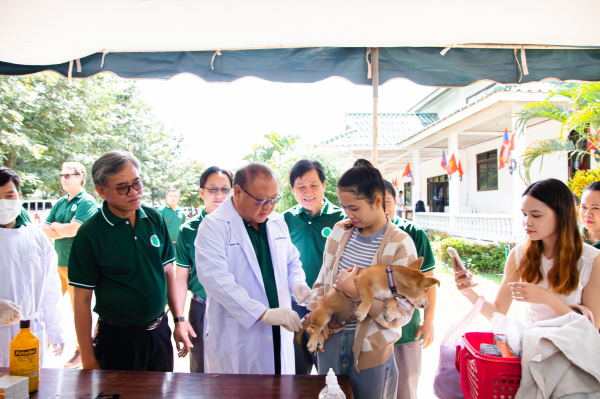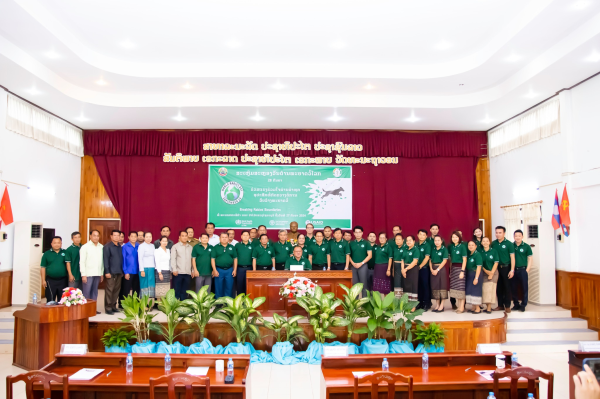KPL
(KPL)Government agencies and international partners have joined forces to combat rabies in the Lao PDR, with a focus on eliminating the deadly disease by 2030. The Ministry of Health, the Ministry of Agriculture and Forestry, and the Provincial Administration Office of Sayaboury Province, in collaboration with the Food and Agriculture Organization of the United Nations (FAO), the World Health Organization (WHO), and the World Organization for Animal Health (WOAH), marked World Rabies Day 2024 at the Sayaboury Provincial Agriculture and Forestry Office.

(KPL)Government agencies and international partners have joined forces to combat rabies in the Lao PDR, with a focus on eliminating the deadly disease by 2030. The Ministry of Health, the Ministry of Agriculture and Forestry, and the Provincial Administration Office of Sayaboury Province, in collaboration with the Food and Agriculture Organization of the United Nations (FAO), the World Health Organization (WHO), and the World Organization for Animal Health (WOAH), marked World Rabies Day 2024 at the Sayaboury Provincial Agriculture and Forestry Office.
With the theme "Breaking Rabies Boundaries," this year’s event emphasized the importance of taking bold steps to overcome current challenges in rabies prevention and control. Dr. Lathsavong Latsamy, Vice Head of the Provincial Health Division, highlighted the need for adopting innovative tools, technologies, and stronger surveillance systems to eradicate the disease. “We must break our current thinking and be ready to take on challenges to enhance rabies prevention and control efforts,” Dr. Lathsavong stressed.
Rabies, a viral disease that is 100% vaccine-preventable, remains a global public health concern, killing nearly 59,000 people annually—40% of them children under 15 years of age in Asia and Africa. Dogs are responsible for up to 99% of human rabies cases, with transmission occurring through bites, scratches, or exposure to the saliva of infected animals.
.png)
Dr. Souphavanh Keovilay, Deputy Director General of the Department of Livestock and Fisheries, urged stakeholders to work together to improve public knowledge and perceptions of rabies. “Once we correct misconceptions and foster a broader understanding, we can fully engage communities and drive change,” he said.
The agencies outlined a strategic plan to reduce rabies cases to "Zero by 2030" through three key goals: 1) improving prevention and response efforts using vaccines and a multisectoral approach; 2) generating reliable data to guide decision-making; and 3) maintaining sustained commitment and resources to ensure progress.
Mr. Matthew Shortus, Team Leader for the Integrated Communicable Diseases Unit at WHO Lao PDR, emphasized the importance of the One Health approach in rabies elimination. He noted that strengthening and equipping a multisectoral workforce is essential for achieving success.

Mr. Chanthalath Pongmala, Assistant FAOR (Programme) at FAO, thanked stakeholders for their support and underscored the importance of prioritizing rabies prevention efforts. “No one should die from a 100% vaccine-preventable disease,” he said, encouraging leaders and communities to allocate resources toward rabies elimination.
As part of the event, FAO provided the Department of Livestock and Fisheries with 4,000 doses of rabies vaccines, which were used to vaccinate dogs and cats in Sayaboury Province. The vaccines, offered free of charge, are part of ongoing efforts by FAO, WHO, and other partners to support rabies vaccination and control programs in Lao PDR.
By working together across sectors and communities, Lao PDR is making strides toward a rabies-free future.
KPL